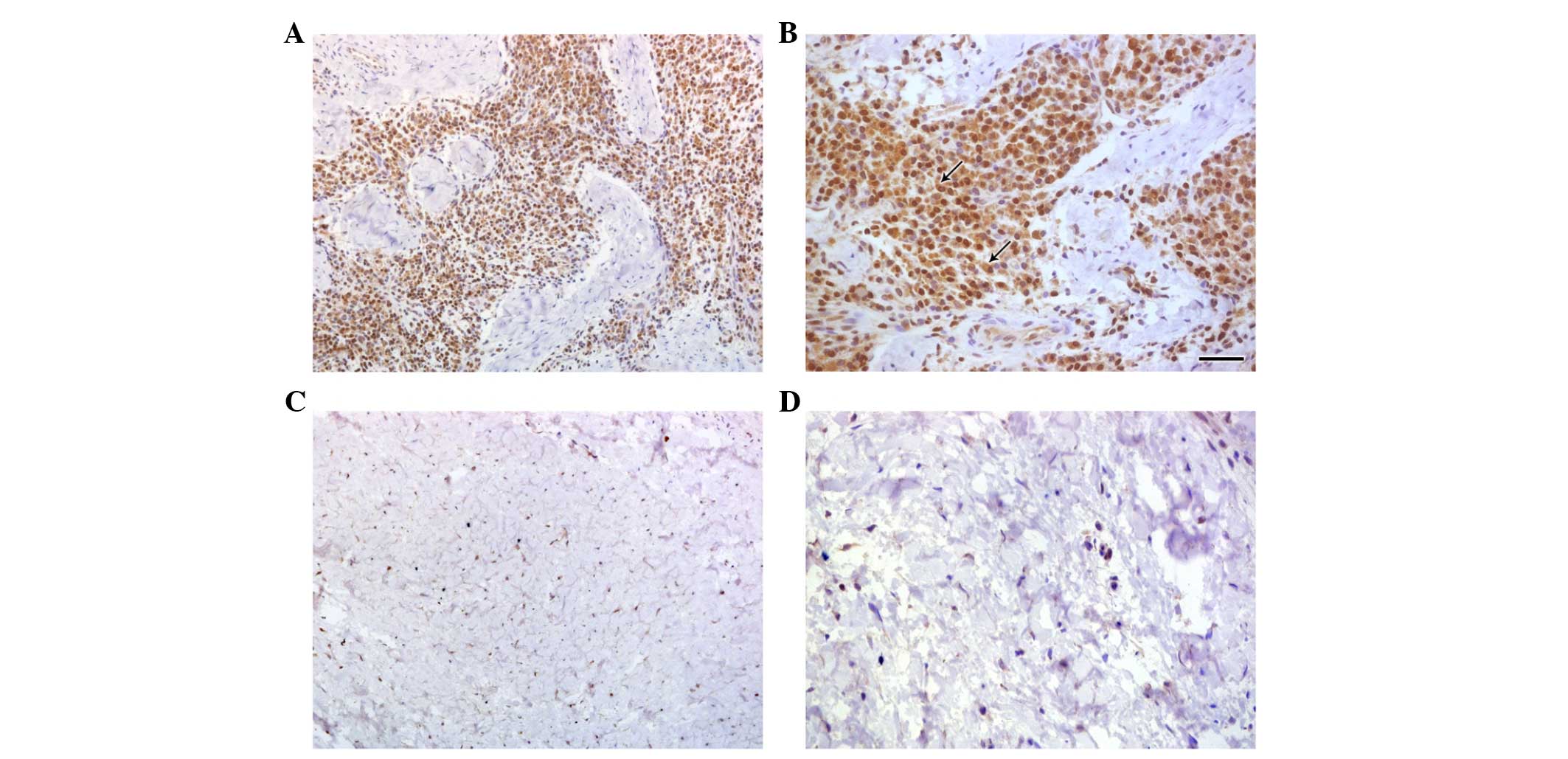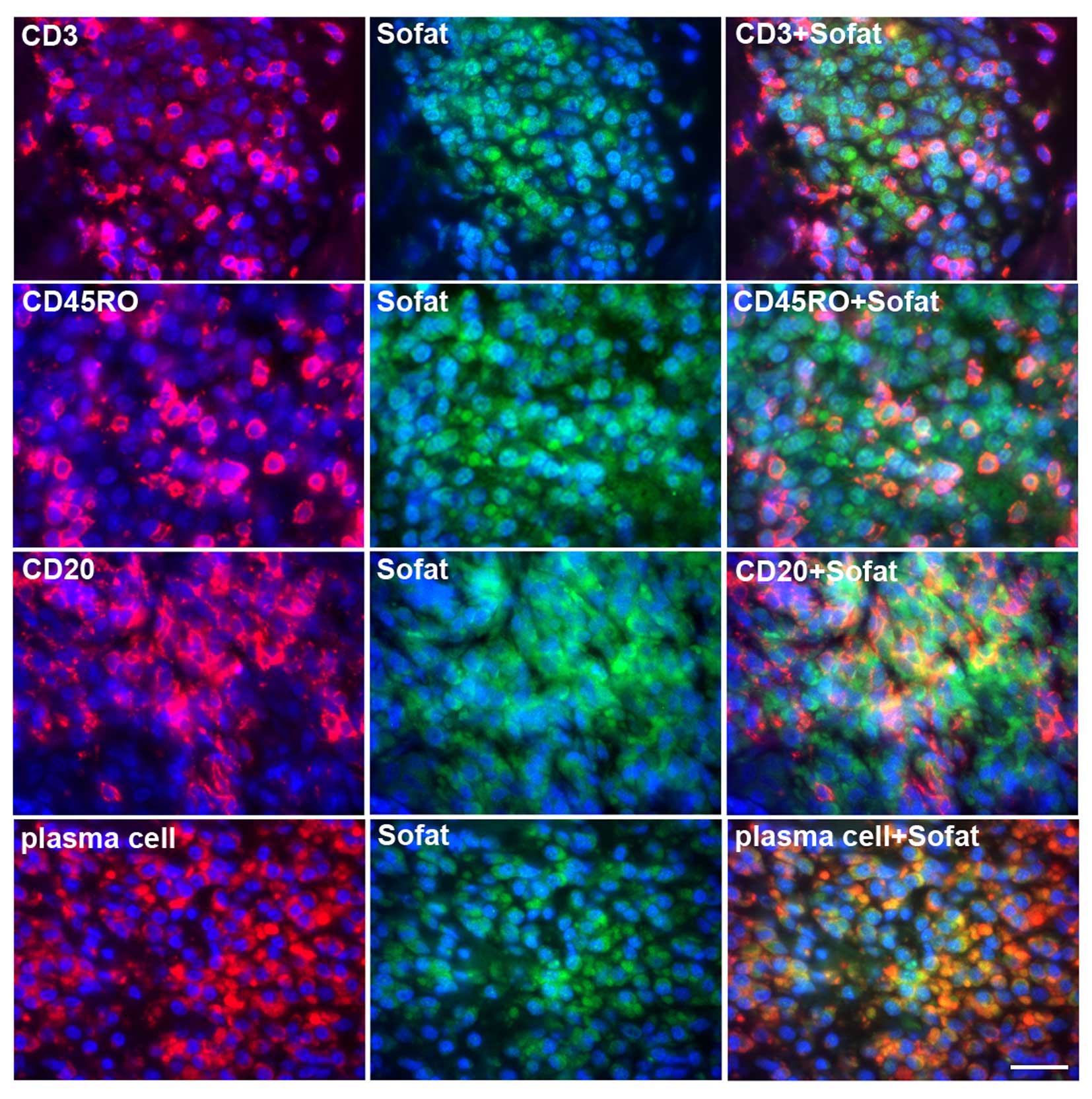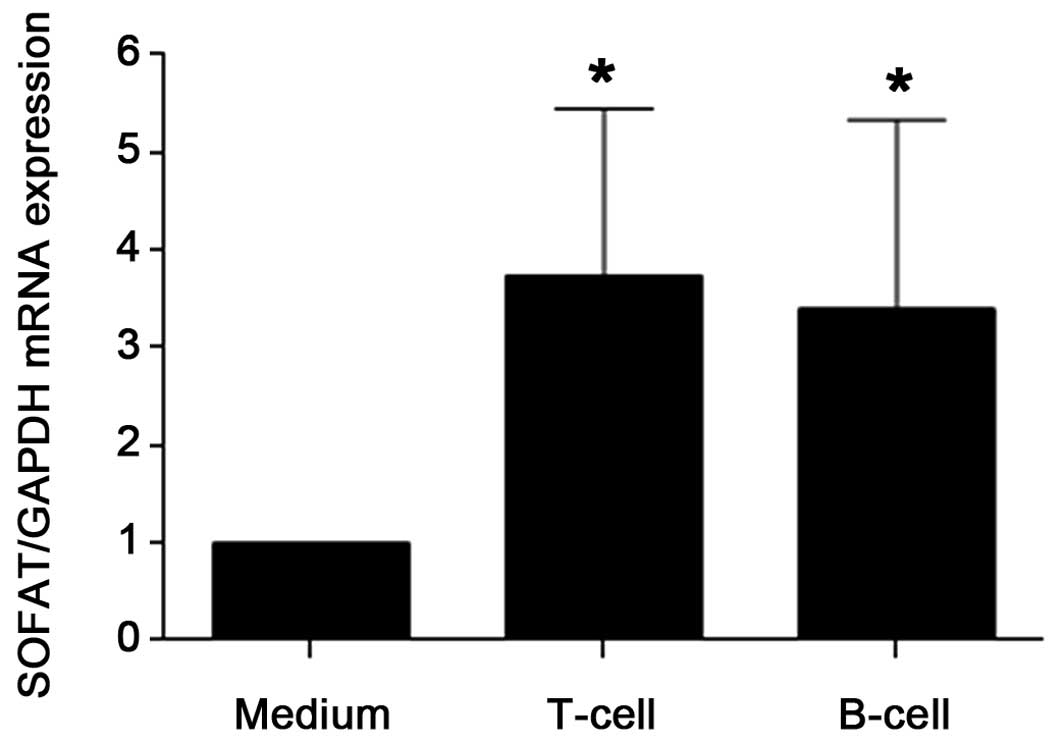|
1
|
Udagawa N, Takahashi N, Jimi E, Matsuzaki
K, Tsurukai T, Itoh K, Nakagawa N, Yasuda H, Goto M and Tsuda E:
Osteoblasts/stromal cells stimulate osteoclast activation through
expression of osteoclast differentiation factor/RANKL but not
macrophage colony-stimulating factor: Receptor activator of
NF-kappa B ligand. Bone. 25:517–523. 1999. View Article : Google Scholar : PubMed/NCBI
|
|
2
|
Suda T, Takahashi N, Udagawa N, Jimi E,
Gillespie MT and Martin TJ: Modulation of osteoclast
differentiation and function by the new members of the tumor
necrosis factor receptor and ligand families. Endocr Rev.
20:345–357. 1999. View Article : Google Scholar : PubMed/NCBI
|
|
3
|
Graves DT, Li J and Cochran DL:
Inflammation and uncoupling as mechanisms of periodontal bone loss.
J Dent Res. 90:143–153. 2011. View Article : Google Scholar :
|
|
4
|
Khalaf H, Lönn J and Bengtsson T:
Cytokines and chemokines are differentially expressed in patients
with periodontitis: Possible role for TGF-β1 as a marker for
disease progression. Cytokine. 67:29–35. 2014. View Article : Google Scholar : PubMed/NCBI
|
|
5
|
Graves DT, Fine D, Teng YT, Van Dyke TE
and Hajishengallis G: The use of rodent models to investigate
host-bacteria interactions related to periodontal diseases. J Clin
Periodontol. 35:89–105. 2008. View Article : Google Scholar : PubMed/NCBI
|
|
6
|
Lacey DL, Timms E, Tan HL, Kelley MJ,
Dunstan CR, Burgess T, Elliott R, Colombero A, Elliott G, Scully S,
et al: Osteoprotegerin ligand is a cytokine that regulates
osteoclast differentiation and activation. Cell. 93:165–176. 1998.
View Article : Google Scholar : PubMed/NCBI
|
|
7
|
Kong YY, Yoshida H, Sarosi I, Tan HL,
Timms E, Capparelli C, Morony S, Oliveira-dos-Santos AJ, Van G,
Itie A, et al: OPGL is a key regulator of osteoclastogenesis,
lymphocyte development and lymph-node organogenesis. Nature.
28:315–323. 1999.
|
|
8
|
Teng YT, Nguyen H, Gao X, Kong YY,
Gorczynski RM, Singh B, Ellen RP and Penninger JM: Functional human
T-cell immunity and osteoprotegerin ligand control alveolar bone
destruction in periodontal infection. J Clin Invest. 106:R59–R67.
2000. View
Article : Google Scholar : PubMed/NCBI
|
|
9
|
Chen B, Wu W, Sun W, Zhang Q, Yan F and
Xiao Y: RANKL expression in periodontal disease: Where does RANKL
come from? Biomed Res Int. 2014:7310392014.PubMed/NCBI
|
|
10
|
Seymour GJ and Greenspan JS: The
phenotypic characterization of lymphocyte subpopulations in
established human periodontal disease. J Periodontal Res. 14:39–46.
1979. View Article : Google Scholar : PubMed/NCBI
|
|
11
|
Taubman MA, Stoufi ED, Ebersole JL and
Smith DJ: Phenotypic studies of cells from periodontal disease
tissues. J Periodontal Res. 19:587–590. 1984. View Article : Google Scholar : PubMed/NCBI
|
|
12
|
Kajiya M, Giro G, Taubman MA, Han X, Mayer
MP and Kawai T: Role of periodontal pathogenic bacteria in
RANKL-mediated bone destruction in periodontal disease. J Oral
Microbiol. 8:22010.
|
|
13
|
Yun TJ, Chaudhary PM, Shu GL, Frazer JK,
Ewings MK, Schwartz SM, Pascual V, Hood LE and Clark EA:
OPG/FDCR-1, a TNF receptor family member, is expressed in lymphoid
cells and is up-regulated by ligating CD40. J Immunol.
161:6113–6121. 1998.PubMed/NCBI
|
|
14
|
Li Y, Toraldo G, Li A, Yang X, Zhang H,
Qian WP and Weitzmann MN: B cells and T cells are critical for the
preservation of bone homeostasis and attainment of peak bone mass
in vivo. Blood. 109:3839–3848. 2007. View Article : Google Scholar : PubMed/NCBI
|
|
15
|
Weitzmann MN, Cenci S, Rifas L, Haug J,
Dipersio J and Pacifici R: T cell activation induces human
osteoclast formation via receptor activator of nuclear factor
kappaB ligand-dependent and -independent mechanisms. J Bone Miner
Res. 16:328–337. 2001. View Article : Google Scholar : PubMed/NCBI
|
|
16
|
Rifas L and Weitzmann MN: A novel T cell
cytokine, secreted osteoclastogenic factor of activated T cells,
induces osteoclast formation in a RANKL-independent manner.
Arthritis Rheum. 60:3324–3335. 2009. View Article : Google Scholar : PubMed/NCBI
|
|
17
|
Jarry CR, Duarte PM, Freitas FF, de Macedo
CG, Clemente-Napimoga JT, Saba-Chujfi E, Passador-Santos F, de
Araújo VC and Napimoga MH: Secreted osteoclastogenic factor of
activated T cells (SOFAT), a novel osteoclast activator, in chronic
periodontitis. Hum Immunol. 74:861–866. 2013. View Article : Google Scholar : PubMed/NCBI
|
|
18
|
Armitage GC: Development of a
classification system for periodontal diseases and conditions. Ann
Periodontol. 4:1–6. 1999. View Article : Google Scholar
|
|
19
|
Araujo MW, Hovey KM, Benedek JR, Grossi
SG, Dorn J, Wactawski-Wende J, Genco RJ and Trevisan M:
Reproducibility of probing depth measurement using a constant-force
electronic probe: Analysis of inter-and intraexaminer variability.
J Periodontol. 74:1736–1740. 2003. View Article : Google Scholar
|
|
20
|
Ainamo J and Bay I: Problems and proposals
for recording gingivitis and plaque. Int Dent J. 25:229–235.
1975.PubMed/NCBI
|
|
21
|
Livak KJ and Schmittgen TD: Analysis of
relative gene expression data using real-time quantitative PCR and
the 2(-Delta Delta C(T)) Method. Methods. 25:402–408. 2001.
View Article : Google Scholar
|
|
22
|
Chen XT, Tan JY, Lei LH and Chen LL:
Cytokine levels in plasma and gingival crevicular fluid in chronic
periodontitis. Am J Dent. 28:9–12. 2015.PubMed/NCBI
|
|
23
|
Garlet GP: Destructive and protective
roles of cytokines in periodontitis: A re-appraisal from host
defense and tissue destruction viewpoints. J Dent Res.
89:1349–1363. 2010. View Article : Google Scholar : PubMed/NCBI
|
|
24
|
Rifas L and Avioli LV: A novel T cell
cytokine stimulates interleukin-6 in human osteoblastic cells. J
Bone Miner Res. 14:1096–1103. 1999. View Article : Google Scholar : PubMed/NCBI
|
|
25
|
Napimoga MH, Demasi AP, Jarry CR, Ortega
MC, de Araújo VC and Martinez EF: In vitro evaluation of the
biological effect of SOFAT on osteoblasts. Int Immunopharmacol.
26:378–383. 2015. View Article : Google Scholar : PubMed/NCBI
|
|
26
|
Han X, Kawai T, Eastcott JW and Taubman
MA: Bacterial-responsive B lymphocytes induce periodontal bone
resorption. J Immunol. 176:625–631. 2006. View Article : Google Scholar
|
|
27
|
Kawai T, Matsuyama T, Hosokawa Y, Makihira
S, Seki M, Karimbux NY, Goncalves RB, Valverde P, Dibart S, Li YP,
et al: B and T lymphocytes are the primary sources of RANKL in the
bone resorptive lesion of periodontal disease. Am J Pathol.
169:987–998. 2006. View Article : Google Scholar : PubMed/NCBI
|

















